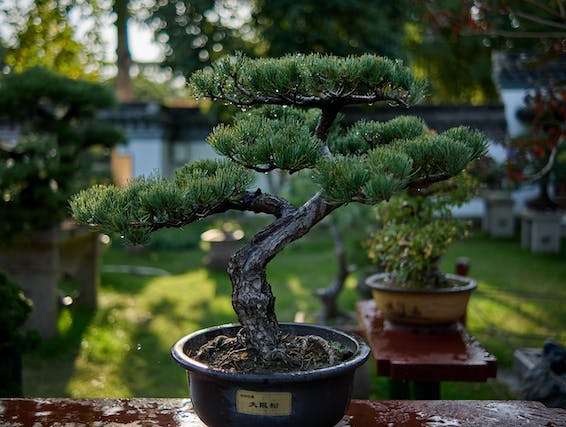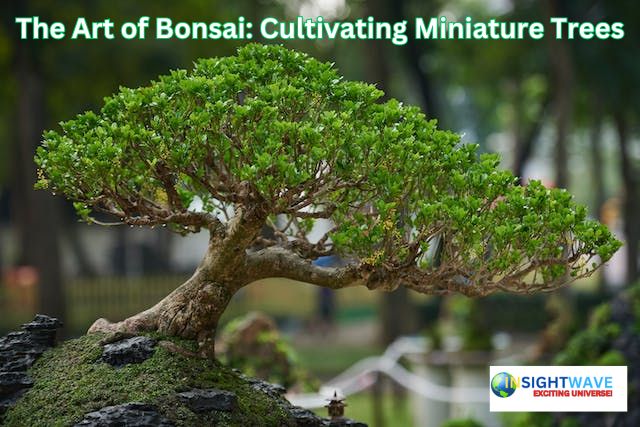Bonsai, a horticultural practice that originated in China over a thousand years ago, is often described as the art of cultivating miniature trees. It’s a timeless and captivating hobby that allows enthusiasts to create living sculptures from ordinary trees. Bonsai isn’t just about trimming and shaping; it’s a profound journey of patience, dedication, and a deep connection with nature. In this blog, we’ll explore the art of bonsai, its history, techniques, and the profound satisfaction it brings to those who embrace it.
Page Contents
The History of Bonsai
Bonsai, which translates to “tray planting” in Japanese, finds its roots in ancient China, where it was known as “penjing.” Chinese scholars and artists would cultivate small, potted landscapes, complete with miniature trees and other elements, as a representation of nature’s grandeur in a confined space. These early practitioners used techniques like pruning and wiring to create the desired shapes and proportions.
In the 8th century, Buddhist monks brought this art to Japan, where it evolved into the bonsai we know today. The Japanese refined and expanded upon the Chinese methods, imbuing their own unique aesthetics and philosophies into the practice. Bonsai became a symbol of refinement, discipline, and the delicate balance between humans and nature.

The Art of Bonsai
At its core, bonsai is about taking a full-sized tree and transforming it into a scaled-down version while retaining its essential character. This is achieved through a combination of techniques, including:
Pruning
Pruning is the most fundamental technique in bonsai. It involves carefully trimming the tree’s branches and roots to control its size and shape. Pruning is not just about aesthetics; it also promotes health and encourages the tree to develop a natural, balanced form.
Wiring
Wiring is used to guide the branches into the desired positions. Copper or aluminum wires are wrapped around the branches and gently bent to achieve the desired curvature. This technique allows for precise control over the tree’s silhouette.
Repotting
Bonsai trees are periodically repotted to refresh the soil, trim the roots, and ensure proper drainage. This helps maintain the tree’s health and allows for continued growth in a confined space.
Read also : Unrolling History: The Ancient Origins of Toilet Paper in 6th-Century China
Styling
Styling is where the artist’s creativity shines. It involves selecting a design or “bonsai style” for the tree, such as formal upright, informal upright, slanting, or cascading. Each style conveys a different mood and character.
Patience
Perhaps the most critical element of bonsai is patience. Trees do not transform into stunning bonsai overnight. It can take years, even decades, to develop a tree into a work of art. Bonsai artists must learn to embrace the slow, deliberate pace of their craft.

Choosing the Right Tree
Not all trees are suitable for bonsai cultivation. The ideal tree for bonsai will have several key characteristics:
Small Leaves: Trees with small leaves or needles are preferred because they create a balanced visual scale with the miniature size of the tree.
Woody and Flexible Branches: Trees with flexible branches are easier to wire and shape. The branches should also be able to withstand pruning without harm.
Interesting Bark and Trunk: Bonsai relies on the tree’s trunk and bark to convey a sense of age and character. Trees with textured bark and unique trunk shapes are highly sought after.
Resilience: Some trees are hardier and more forgiving for beginners. Junipers, Ficus, and Chinese elms are often recommended for novice bonsai enthusiasts.
The Emotional Connection
Bonsai is not just about technical skills and aesthetics; it’s a deeply emotional experience. Many bonsai practitioners describe a profound connection with their trees. Caring for a bonsai demands regular attention and nurturing, and as the years go by, a bond forms between the artist and the tree. Bonsai often represent memories, patience, and personal growth for their caretakers.
The Bonsai Community
Bonsai is not a solitary pursuit. Enthusiasts around the world gather at clubs, exhibitions, and workshops to share their passion and knowledge. These gatherings offer valuable opportunities to learn from experienced artists, exchange ideas, and find inspiration for new projects. The bonsai community is a welcoming and supportive one, eager to help newcomers embark on their bonsai journey.
Read Also : The Benefits of Regular Exercise on Brain Health
Common Myths
Bonsai is sometimes shrouded in misconceptions that can deter potential enthusiasts. Let’s dispel a few of these myths:
Bonsai are naturally dwarfed trees: Bonsai trees are not a unique species; they are regular trees that are meticulously pruned and shaped over time. They require the same care and attention as their full-sized counterparts.
Bonsai are expensive: While some high-quality bonsai specimens can be costly, bonsai can be enjoyed on a budget. Many beginners start with less expensive nursery stock and gradually refine their skills.
Bonsai require constant attention: Bonsai do require regular care, but they are not high-maintenance. With proper planning and the right techniques, you can enjoy your bonsai without it dominating your daily life.
Conclusion
Bonsai is a captivating blend of art, nature, and personal growth. It invites us to slow down, embrace patience, and appreciate the beauty of the miniature world it creates. The art of bonsai connects us with the wisdom of ancient cultures while allowing us to express our creativity and love for nature. Whether you’re a seasoned bonsai artist or a beginner looking to embark on this journey, remember that bonsai is not just about cultivating miniature trees; it’s about cultivating a deeper connection with the natural world and your own inner artist. So, pick up your pruning shears, wire, and a young tree, and start sculpting your own living masterpiece in the world of bonsai.


